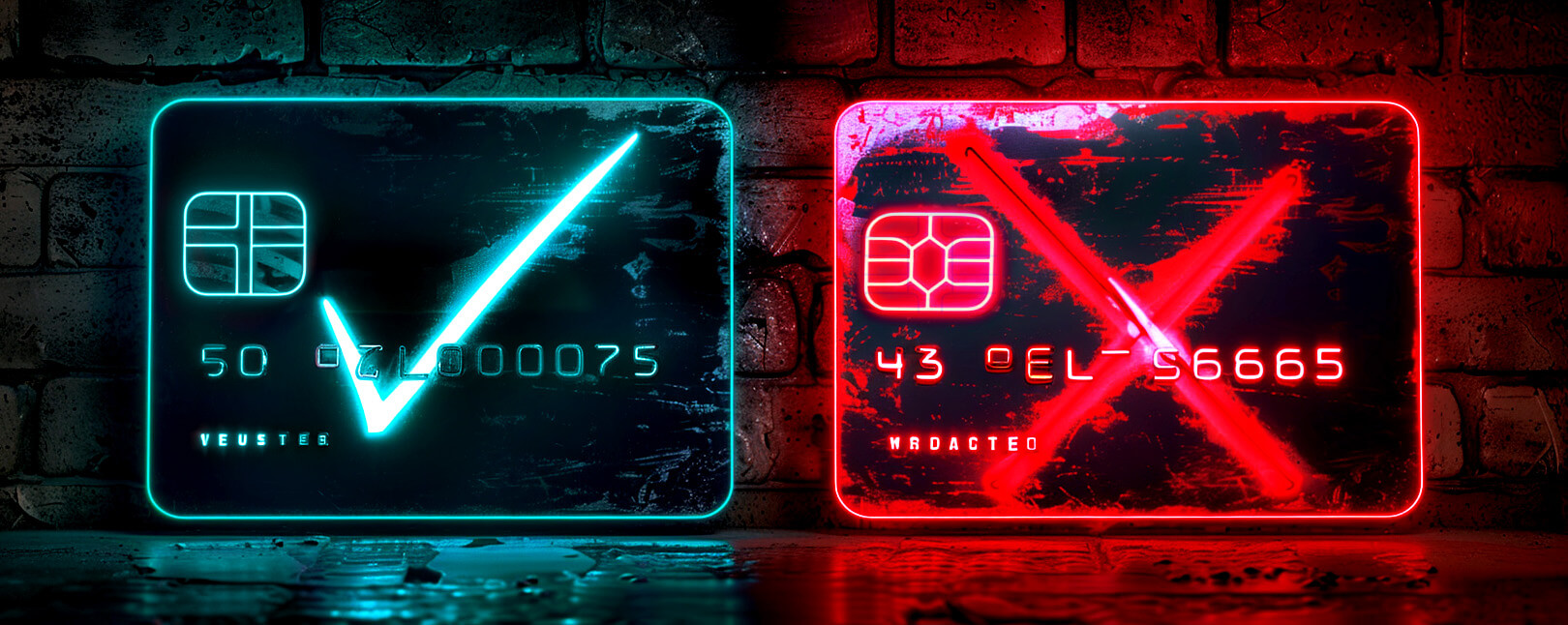The Top 5 Cyber Shoplifting Threats & How to Eliminate Them
Let's say someone walks into a store, pockets something off the shelf, then walks out without paying. That person would clearly be guilty of shoplifting. But, did you know it's possible to pull off the same kind of behavior online? All it takes is one simple call to the bank.
Cyber shoplifting is a genuine problem without an easy solution. That problem is getting worse with time, too.
Recommended reading
- What is Chargeback Fraud? How do You Protect Yourself?
- Stop Buyer’s Remorse: Tips to Beat the Second-Glance Blues
- Return Fraud: What It Is, and How Merchants Can Fight It
- Accidental Friendly Fraud: a Fast-Growing Online Threat
- The Top 10 Tips for Chargeback Fraud Prevention in 2024
- What is “Family Fraud”? How Can You Stop it?
What is Cyber Shoplifting?
- Cyber Shoplifting
Cyber shoplifting is a first-party fraud tactic by which a user makes a purchase with the intent to turn around and file a chargeback later. It’s deliberate chargeback abuse; the cardholder deliberately steals from the merchant, using the chargeback process as a tool.
[noun]/* sī • bər • SHäp • lif • tiNG/
To illustrate, suppose a customer orders a pricey computer from your online store. The item was brand new and in perfect working order when shipped to the customer. Next thing you know, your bank informs you that the computer never arrived at the customer's address…even though you have delivery confirmation in hand.
The bank files a chargeback for the supposedly missing item. They remove the full purchase amount from your account. Then, your acquirer tacks on an extra fee for their trouble. This could be an example of cyber shoplifting.
Cyber shoplifting occurs when a customer makes a purchase, already intending to get their money back for it later. To do this, they will initiate an order from an online retailer. Once the order has shipped, they will call the bank and claim that:
- the item was significantly different from what they ordered
- the goods were damaged on arrival
- the transaction was unauthorized
- the goods never arrived
The cyber shoplifter will keep the item even after the bank initiates a chargeback. They are “getting something for free” at your expense.
Cyber shoplifting is a form of friendly fraud. There is a key distinction between intentional and accidental friendly fraud, and it could determine whether you end up paying for the fraud or not.
Learn more about friendly fraudCyber Shoplifting vs. Accidental Friendly Fraud
All friendly fraud involves chargeback abuse on the part of the cardholder. The buyer makes a purchase, then later files a chargeback without proper justification. The main difference is the intent behind the chargeback.
There are many potential friendly fraud triggers. For example, the buyer might claim:
- The purchase was made by a family member.
- They can't recognize the transaction by the billing descriptor, and suspect it is criminal fraud.
- They don't understand the difference between a return and a chargeback.
- They want to return an item after the allowed time limit has expired.
Many friendly fraudsters don't necessarily intend to hurt your business. Most are good customers who file a chargeback by mistake or out of desperation.
Learn more about accidental friendly fraudCyber shoplifters are an entirely different story, though. These thieves make purchases fully intent on turning around and filing a chargeback later.
The fraudster may claim to have never received an item or that the goods were shipped back for return and never processed. Either way, the entire point is to get something for free. Cyber shoplifters don’t care that they’re leaving you to deal with the lost revenue, merchandise shortages, and added fees.
Who are Cyber-Shoplifters?
Who is doing this? Are they professionals or just opportunistic?
There is a small contingent of professionalized criminals who’ve learned to game the system. Shoplifting in a brick-and-mortar store includes much more risk than cyber shoplifting. A thief must dress, act, and behave a certain way to avoid detection in a physical retail shop. Online, though, they can hit a merchant without ever even speaking to them.
Professional cyber shoplifters are rare, though. Most perpetrators were, at one time, legitimate customers.
It's certainly possible that a cyber shoplifter might get so good at ripping merchants off that they can start their own side business from the products they grift. However, most cyber shoplifting is committed by regular cardholders who’ve figured out how to game the system to get free stuff.
Why Cyber Shoplifting Happens
The problem began with the desire for convenience. Our data suggests that 81% of cardholders have used chargebacks as a more convenient way to receive a refund. It’s not necessarily their fault, though.
Banks have made it exceedingly easy to dispute a charge. They’ve actually made the chargeback process seem more easy and convenient than requesting a return in some regards. This teaches irresponsible shopping habits to consumers.
The result: a consumer who has successfully filed a chargeback is nine times more likely to do it again, as compared to a first-time chargeback user. 40% of consumers who commit friendly fraud will do it again within 60 days.
Even worse, the payments industry encourages this behavior. Financial institutions don't always engage in enough due diligence to weed out invalid chargeback claims. As a result, they indirectly encourage consumers to practice cyber shoplifting.
The chargeback system was developed decades before eCommerce became a concern. The industry has lagged behind technological developments, leaving the chargeback process unresponsive to the realities of the contemporary marketplace. In short: the rules are so broken that they can take legitimate customers and turn them into fraudsters.
The Key Indicators of Cyber Shoplifting
Employees in brick-and-mortar environments are trained to watch for specific “tells” that suggest a shopper is up to no good. For instance, avoiding eye contact, hanging out in corners or other concealed parts of the sales floor, and carrying “booster bags” are all red flags for shoplifting.
None of those behaviors transfer from physical to digital space, of course. However, there are still useful indicators that could help you identify cyber shoplifting before it's too late.
You should review orders to gauge the risk they pose for cyber shoplifting. Consider the five following indicators:
How To Prevent Cyber Shoplifting: Our Top 6 Tips
Try incorporating these practices to catch thieves in the act and reduce your cyber shoplifting risk:
Remember: no single “red flag” on its own indicates definite cyber shoplifting. However, if you identify multiple signs, it's a good idea to act as necessary. Banks aren't as likely to catch cyber shoplifting; after all, the perpetrator is their customer. That's why you need to be proactive.
Of course, even if you're hyper-vigilant, cyber shoplifters still have a chance to get through. When they do, you need to respond fast.
Don't Get Mad…Get Tactical
Even if a buyer engages in cyber shoplifting, you still have an option, in the form of chargeback representment. Success demands a tactical approach, though.
Learn more about representmentBefore, merchants relied on chargeback reason codes that were incapable of pinpointing the problem. In most cases, reason codes became an obstacle that helped hide cyber shoplifting and friendly fraud activity, obscuring the real cause of the dispute. In contrast, a tactical chargeback response removes the reliance on reason codes; this strategy diagnoses chargeback triggers and identifies the proper evidence to build a winning case.
At Chargebacks911®, we employ Intelligent Source Detection™ technology. Whether it's cyber shoplifting or just an honest mistake on the customer's part, Chargebacks911's tools and expertise make it possible to find the reason behind the reason code.
Our Tactical Chargeback Representment service is designed to evaluate disputes and craft an evidence-backed case. Our clients enjoy:
- Better dispute win rates
- Faster resolutions
- Fewer second chargebacks
- Long-term chargeback reduction
Ready to make cyber shoplifting and other chargeback triggers a thing of the past? Click below and get started today.
FAQs
What is cyber shoplifting?
Cyber shoplifting is a first-party fraud tactic by which a user makes a purchase with the intent to turn around and file a chargeback later. It’s deliberate chargeback abuse; the cardholder deliberately steals from the merchant, using the chargeback process as a tool.
How does cyber shoplifting work?
Cyber shoplifting occurs when a customer makes a purchase they intend to get their money back for later. To do this, they will initiate an order from an online retailer. Once the order has shipped, they will claim the order was significantly different from what they ordered, was damaged or never arrived, or that it was never authorized.
Unlike a case of accidental friendly fraud, the cyber shoplifter will never return the item once the bank initiates a chargeback. They receive a refund for the original transaction amount, but keep the merchandise.
Who commits cyber shoplifting?
Cyber shoplifters are the cardholders themselves, looking to get something for free.
It’s possible that a cyber shoplifter might get so good at ripping merchants off that they can start their own side business from the products they grift. However, this isn't commonly the case. Most cyber shoplifting is committed by regular people who figured out how to game the chargeback system for free stuff.
What are the signs of cyber shoplifting?
The key indicator of cyber shoplifting is a previous customer who has abused the dispute process in the past. Other possible red flags include erratic or unusual purchasing behavior, orders that originate outside the country, or an order for items commonly targeted by fraudsters.
How can merchants prevent cyber shoplifting?
A few best practices can greatly reduce your exposure to cyber shoplifters. Examples include flagging cross-border transactions, reviewing large orders, limiting transaction velocity, sending order confirmations, getting active confirmation, and requesting delivery & signature confirmation.















